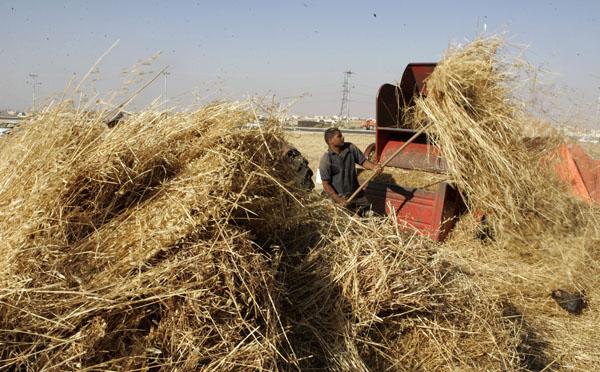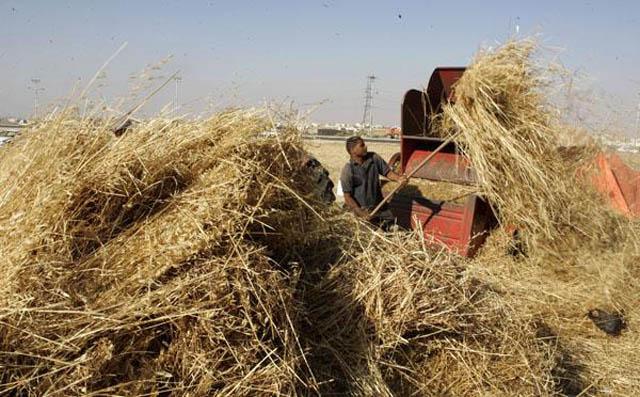You are here
Farmers warned against possibility of wheat leaf rust infection
By Hana Namrouqa - May 14,2015 - Last updated at May 14,2015

AMMAN — The Ministry of Agriculture on Thursday warned that the recent rainfall might increase chances of wheat crops being infected with wheat leaf rust, a fungal disease that affects wheat primarily among other grains.
“Rain on Monday and again on Thursday, especially in the highlands and the northern region, could cause the spread of wheat leaf rust due to high humidity levels,” Agriculture Ministry Spokesperson Nimer Haddadin told The Jordan Times.
Symptoms of the fungal disease are stunted and weakened plants, shrivelled grains, fewer spikes and loss in the number of grains per spike, and grain weight.
High humidity and rainfall are favourable conditions for increasing the infection on both the leaf blade and leaf sheath, even on spikes when in epidemic form, according to web sources, which indicated that losses of between 5 and 20 per cent are normal but may reach 50 per cent in severe cases.
“Unfortunately, nothing can be done at this stage, nor can farmers spray pesticides to help fight off the disease. The wheat harvesting season will start by the end of this month,” Haddadin said.
Wheat and barley were cultivated on 872,499 dunums of land for the 2014/2015 agricultural season, according to official figures.
Earlier this year, around 5 per cent of the land planted with wheat and barley in the Karak, Mafraq, Madaba, Ajloun and Irbid governorates were infected by the cereal leaf miner, a worm that infests grains, according to the ministry.
However, the wheat and barley crops are safe as 90-95 per cent of the pest was terminated, the ministry said at the time, stressing that wheat and barley production will not be affected.
The country produced 12,000 tonnes of wheat last year, according to the ministry, which expected crop production to range between 20,000 and 25,000 tonnes this year due to “excellent rainfall during the wet season”.
Farmers grow wheat across the country, but the grain is mainly cultivated in Irbid and the Houran plains in the north; Madaba and Husban in the central region; and Arrabeh in southern Karak Governorate.
Official figures indicate that the country’s wheat imports used to be around 900,000 tonnes annually, but the figure has increased to 1 million tonnes due to population growth in light of the Syrian refugee influx.
The Kingdom, which consumes 80,000 tonnes of wheat per month, imports over 96 per cent of its wheat needs as domestic production covers only around 4 per cent of demand.
Jordan imports its needs of wheat from several countries including Ukraine, Kazakhstan, Russia, Romania and the United States.
Related Articles
Almost 5 per cent of the land planted with wheat and barley in the country has been infected with the cereal leaf miner, a worm that infests grains, a government official said on Saturday.
A fifth of the land planted with cereals in Karak Governorate is infected with the cereal leaf miner, a worm that infests wheat and barley among other grains, officials said on Sunday.
AMMAN — The government has raised the price at which it will buy wheat and barley from farmers in compensation for a “weak” production seaso
















